Microsoft: 'Surface Pro 3 is made for people, not for businesses'
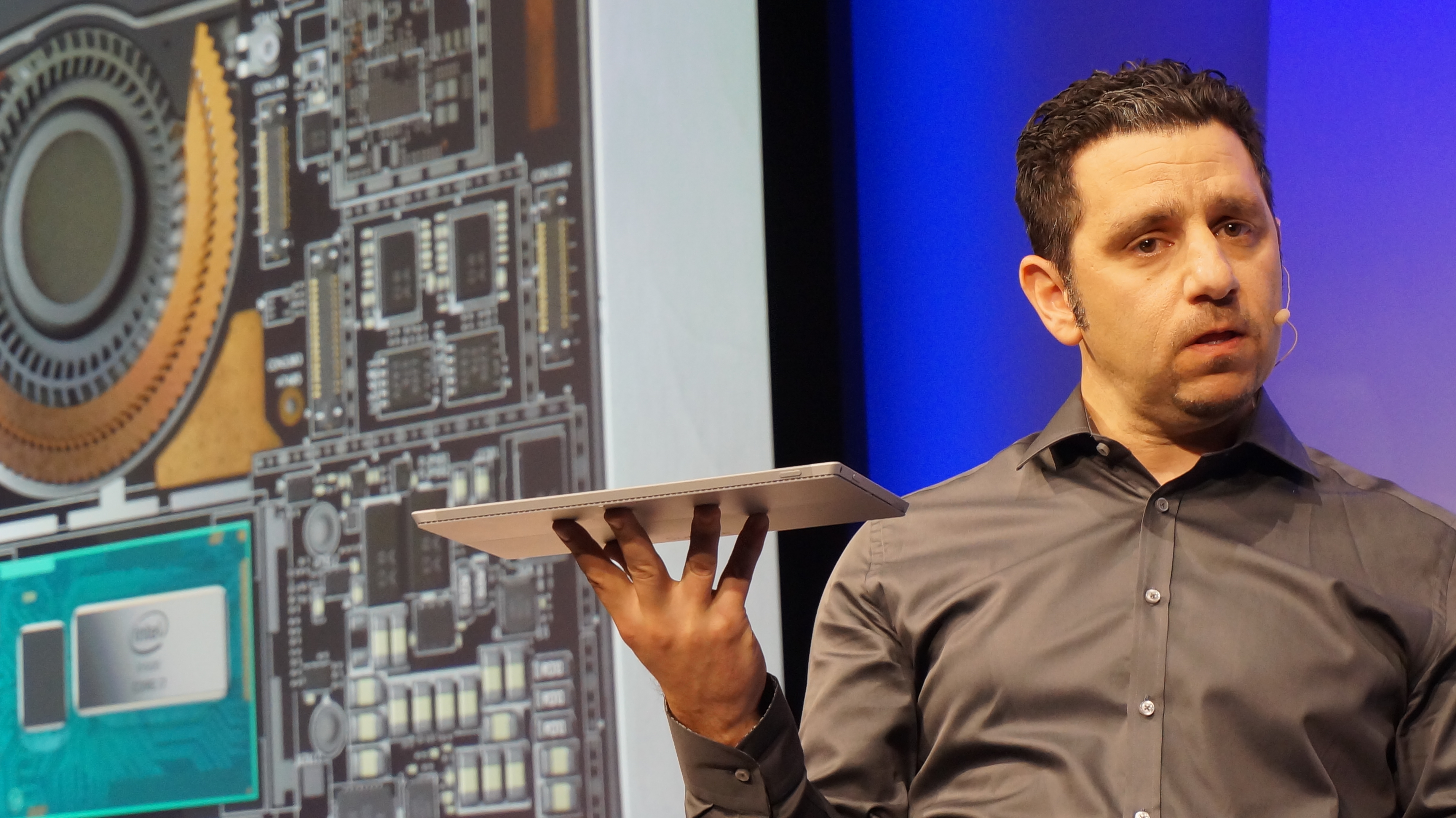
Before Apple CEO Tim Cook pulled back the curtain on the iPad Air last year, he threw in a thinly veiled jab at Microsoft in the process: "Our competition is different. They're confused. They chased after netbooks. Now, they're trying to make PCs into tablets and tablets into PCs. Who knows what they will do next?"
Behind him, an image of a traffic sign depicting a goofily winding road appeared on a large screen. Did Panos Panay, Corporate Vice President of Surface at the Redmond, Wash.-based Windows maker, take this slight personally?
I didn't bother asking him during a quick interview after his reveal of the Surface Pro 3. But an image of a traffic sign did appear behind him on stage at the New York event, depicting a single fork in a road. Moments later, Panay slapped the Surface Pro 3 on a scale beside an iPad Air stacked atop a 13-inch MacBook Air.
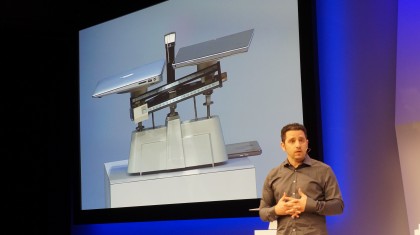
Stacking up the Surface
"The reason I consciously put the [iPad Air and MacBook Air] together was just to make the point," Panay says just feet away from that very stage. "I've heard the comparison: You can compare this to the iPad Air. It's completely ridiculous, but you could. 'It's twice as much, why would you buy it?' It's absolutely silly, because they're ignoring reality."
Perhaps, but what about the MacBook Air? Isn't the Surface Pro 3 a tablet first? After all, that keyboard cover doesn't come with the device - it's a $129 accessory. Still, Panay firmly believes that the third time's a charm: this is the tablet to replace the leading laptop.
"You can compare it just to the [MacBook] Air and it will stack up pretty well," the Surface lead says. "Weight? Better. Thinness? Better. You find yourself in this pretty good balance. You get a pen and touch with this, you don't with that. It's a full laptop."

But those are bullet points for the journalists, pundits and critics. They're not what the average customer standing in the store, overwhelmed by the options, cares about.
Sign up for breaking news, reviews, opinion, top tech deals, and more.
"The true comparison for a real person - not an article, for a person - is: Am I gonna' have to buy both," Panay frankly states. "And, if I do, what does that cost me? And, in reality, bare minimum? $1,500. So, now your decision point is very easy. I think we actually have a pretty good shot at this."
Professionals are people, too
Given the name and its price point, you'd think that Microsoft would aim such a product as the Surface Pro 3 at professionals and businesses. But Panay is quick to dash any such notion.
"The product truth is that it's made for people. That means it's not made for businesses. There were decisions made. I don't put trap doors on the back. You can't replace the hard drive, and you can't replace the battery. It's meant to be seamless."
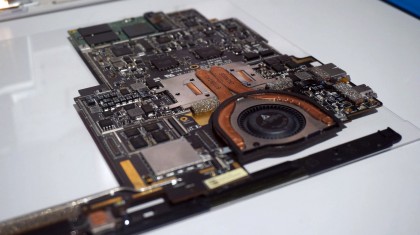
That's not to say that Panay's team didn't design the Surface Pro 3 with work in mind. Did Apple show off the MacBook Air or iPad Air, touting how IT buyers would be all over them? No, but look at what happened: people, professional people, simply gravitated toward them. And now they're included in almost every BYOD (Bring Your Own Device) plan around.
"I could've opened this kickstand up and let you play. But the beauty of this device, when you look at the details of this thing, it's phenomenal. Because the point was people. You at home, first. And if you wanted to take it to work? Bless you. That's a phenomenal result."
"The consumerization of IT is real. Bring Your Own Device is real. They aren't fake. People love the stuff they're holding. We have now this trend that puts us in that place to, I don't know, win? Is that too strong of a word?"
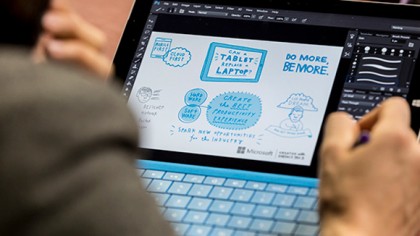
Of course, BYOD is one trend that Apple managed to get ahead of with the iPhone and later iPad. (Remember when Blackberry ruled the roost?) The competition has a huge head start, on a long, unforgiving road.
But do they need the best of both worlds?
The first question I asked Panay during our chat was a simple one: Why does Microsoft want to replace the laptop, anyway?
"I needed this thing that was slick, thin, sexy, personal. But I still needed to get stuff done," Panay says. "That conflict results in buyer's remorse, results in buying more products, results in buying multiple versions of products. It results in throwing tablets away that you thought you needed, but didn't ever use. That's certainly not replacing the laptop."
"What's happening is, we have a product that's giving you the best of a tablet, and we have a product that eventually gives you all of the benefits of a laptop. Does that mean you're replacing the laptop? Yes, because it's a whole new category. At some point, you're making a market."
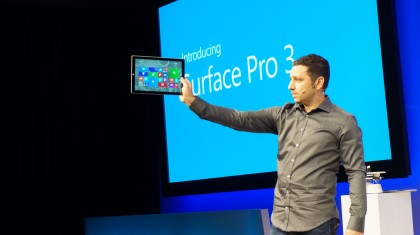
But tablets still aren't vital pieces technology like desktops and later laptops have proved over the past 30 years. Meanwhile, the hybrid category has yet to prove that it's capable of enabling both use cases in equal measure.
You may argue that there is no conflict, that hybrids are a solution looking for a problem, and Surface is no different. Regardless of where it's placed, Panay has conviction in spades.
"People are waiting for something," Panay says. "We thought it was netbooks. We thought it was tablets. And here we are, still, what's it gonna' be? I think we're bringing that forward."
- See what we think of the Surface Pro 3 so far

Joe Osborne is the Senior Technology Editor at Insider Inc. His role is to leads the technology coverage team for the Business Insider Shopping team, facilitating expert reviews, comprehensive buying guides, snap deals news and more. Previously, Joe was TechRadar's US computing editor, leading reviews of everything from gaming PCs to internal components and accessories. In his spare time, Joe is a renowned Dungeons and Dragons dungeon master – and arguably the nicest man in tech.